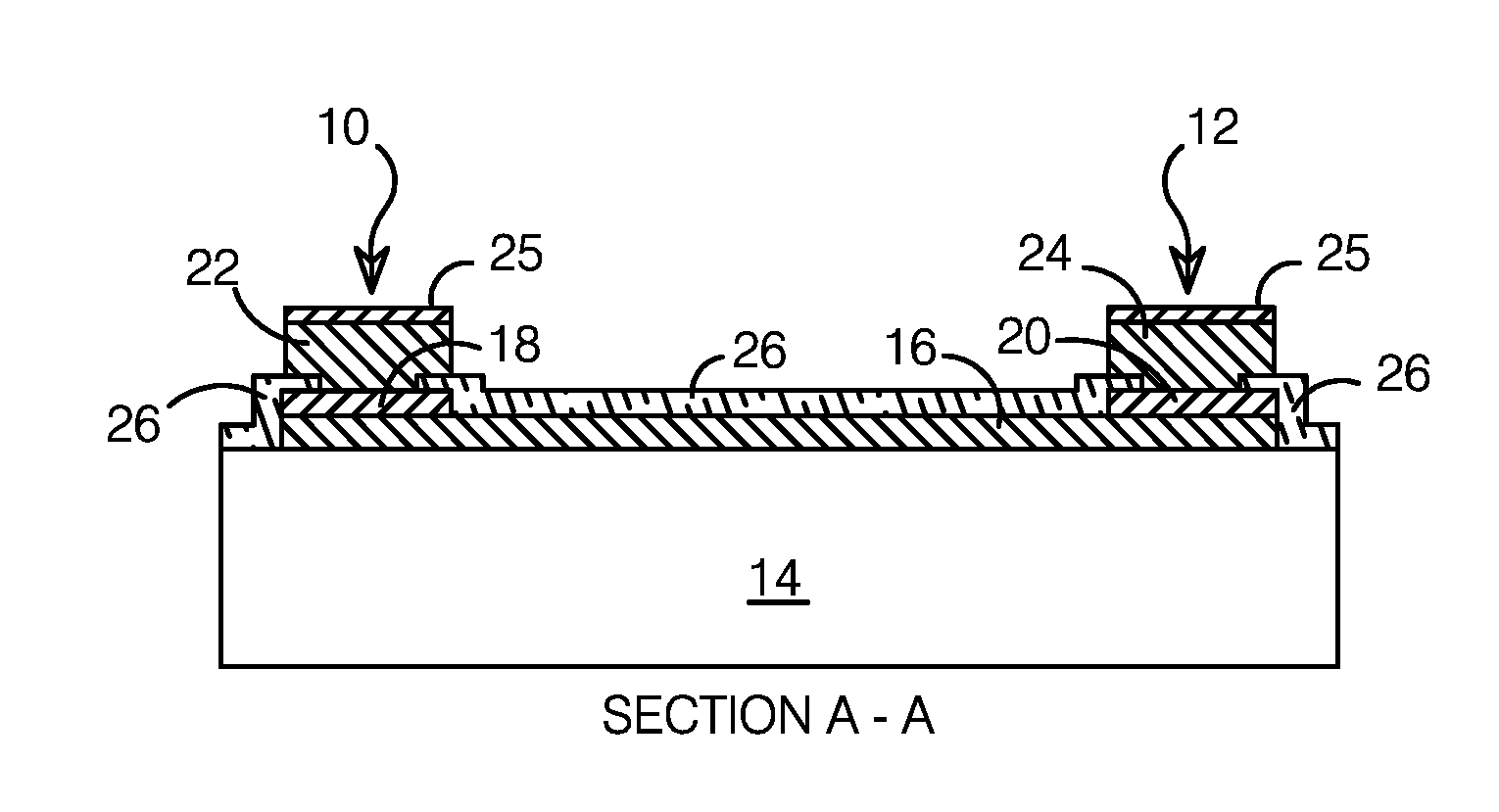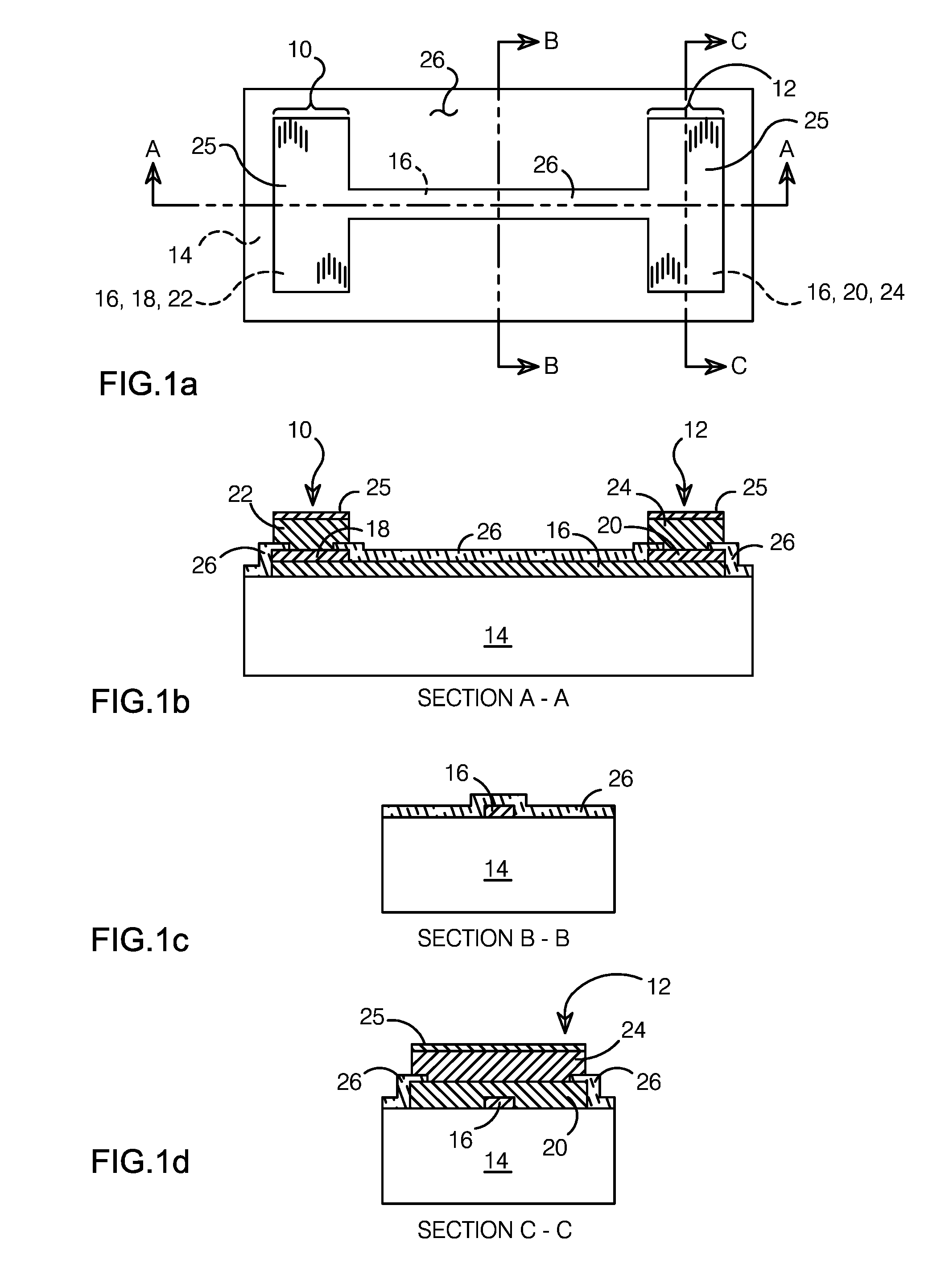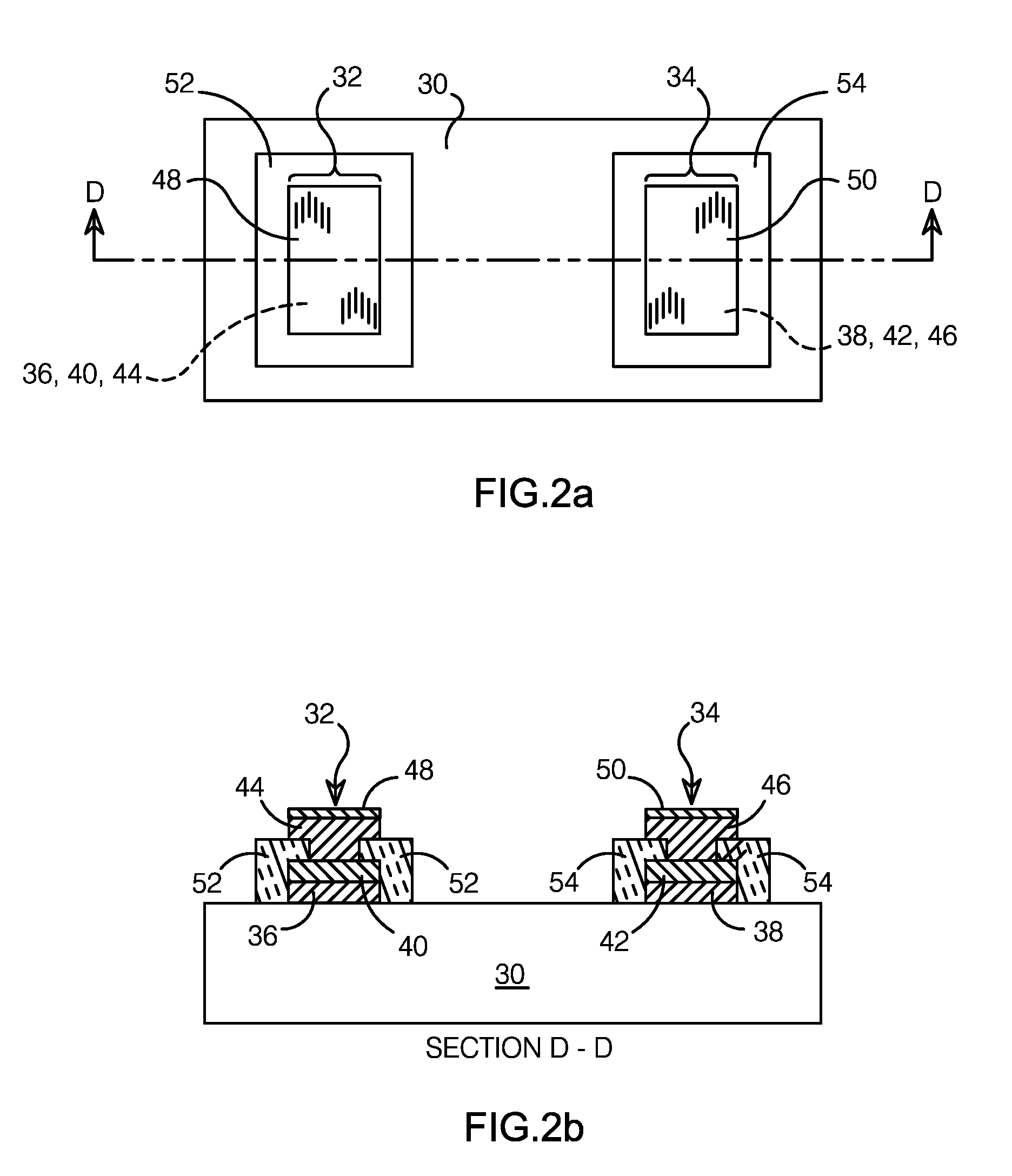Thin-film aluminum nitride encapsulant for metallic structures on integrated circuits and method of forming same
a technology of aluminum nitride and metallic structure, which is applied in the direction of resistive material coating, superimposed coating process, liquid/solution decomposition chemical coating, etc., can solve the problems of degrading the accuracy of the sensor, changing the characteristics of the metal making up the structure, and reducing the vacuum environment
- Summary
- Abstract
- Description
- Claims
- Application Information
AI Technical Summary
Benefits of technology
Problems solved by technology
Method used
Image
Examples
Embodiment Construction
[0021]The present AlN thin-film encapsulant is advantageously employed over thin-film metallic circuitry such as an environmental sensor, on the vertical edges of an electrode pad, and / or over some or all of the surface area of an IC substrate. When used as described herein, the AlN thin-film acts to protect the encapsulated structures from exposure to an oxidizing atmosphere and from reducing and vacuum environments, electrically insulates them from other metallic structures, and may improve their adherence to the IC substrate's surface. Note, however, that to act as an effective encapsulant, the AlN thin-film must not chemically react with the conductive materials it is in contact with.
[0022]The principles of the invention are illustrated in the plan view of an IC shown in FIG. 1a, along with the cross-sectional views of the IC of FIG. 1a shown in FIGS. 1b, 1c and 1d, which are cut along section lines A-A, B-B and C-C, respectively. In this example, two metallic electrode pads 10,...
PUM
| Property | Measurement | Unit |
|---|---|---|
| Temperature | aaaaa | aaaaa |
| Pressure | aaaaa | aaaaa |
| Structure | aaaaa | aaaaa |
Abstract
Description
Claims
Application Information
 Login to View More
Login to View More - R&D
- Intellectual Property
- Life Sciences
- Materials
- Tech Scout
- Unparalleled Data Quality
- Higher Quality Content
- 60% Fewer Hallucinations
Browse by: Latest US Patents, China's latest patents, Technical Efficacy Thesaurus, Application Domain, Technology Topic, Popular Technical Reports.
© 2025 PatSnap. All rights reserved.Legal|Privacy policy|Modern Slavery Act Transparency Statement|Sitemap|About US| Contact US: help@patsnap.com



